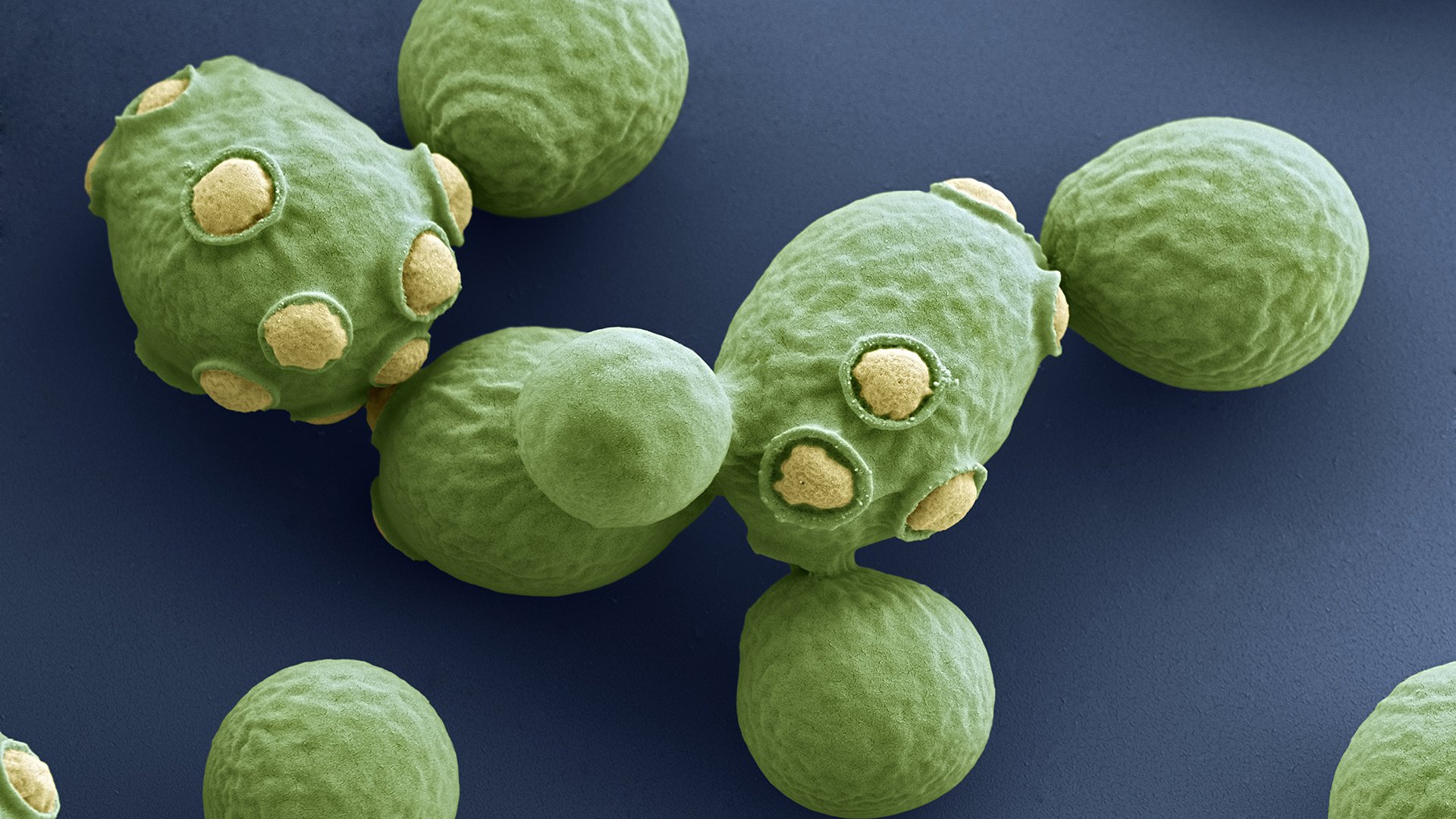Saccharomyces cerevisiae is a yeast that humans have used for thousands of years to make food and drinks like beer, wine and bread. That is also how the yeast got its name, as Saccharomyces cerevisiae means 'sugar mould from beer'.
Saccharomyces cerevisiae is a yeast that humans have used for thousands of years to make food and drinks like beer, wine and bread. That is also how the yeast got its name, as Saccharomyces cerevisiae means 'sugar mould from beer'.
Competition
The beer yeast (also referred to as baker's yeast or wine yeast) primarily lives on fruit, although it is also found on tree bark, and there are even strains that have been found in human excrement. Yeasts can live in both aerobic and anaerobic environments. In an aerobic environment, they oxidise all kinds of sugars, while fermentation takes place in an anaerobic environment. The latter means that the yeasts are able to convert sugar into energy, CO2 and alcohol, without using oxygen. Producing alcohol allows the yeasts to win the competition against other microbes, since alcohol is poisonous.
Luring vectors and hitching a ride
Food is not always abundant in the places where yeasts naturally occur. In order to survive lengthy periods of insufficient nutrients, high temperatures or dehydration, the yeasts produce spores. These spores are spread by vectors, such as fruit flies (Drosophila melanogaster). The fruit flies eat the spores and later excrete them. The spores can also stick to the bodies of insects and be spread in that manner. Yeasts excrete a substance that attracts these vectors, increasing their chances of being distributed.
Model organism
The cells of S. cerevisiae are eukaryotic. This means that the cells have a cell nucleus that contains DNA, among other things. This is different to bacteria, for example, where the DNA found in the cells is enclosed by a membrane. S. cerevisiae is often used as a model organism, as it is unicellular and easy to cultivate. Research conducted with this yeast has contributed to the understanding of fundamental processes taking place in large multicellular eukaryotic organisms like humans.

